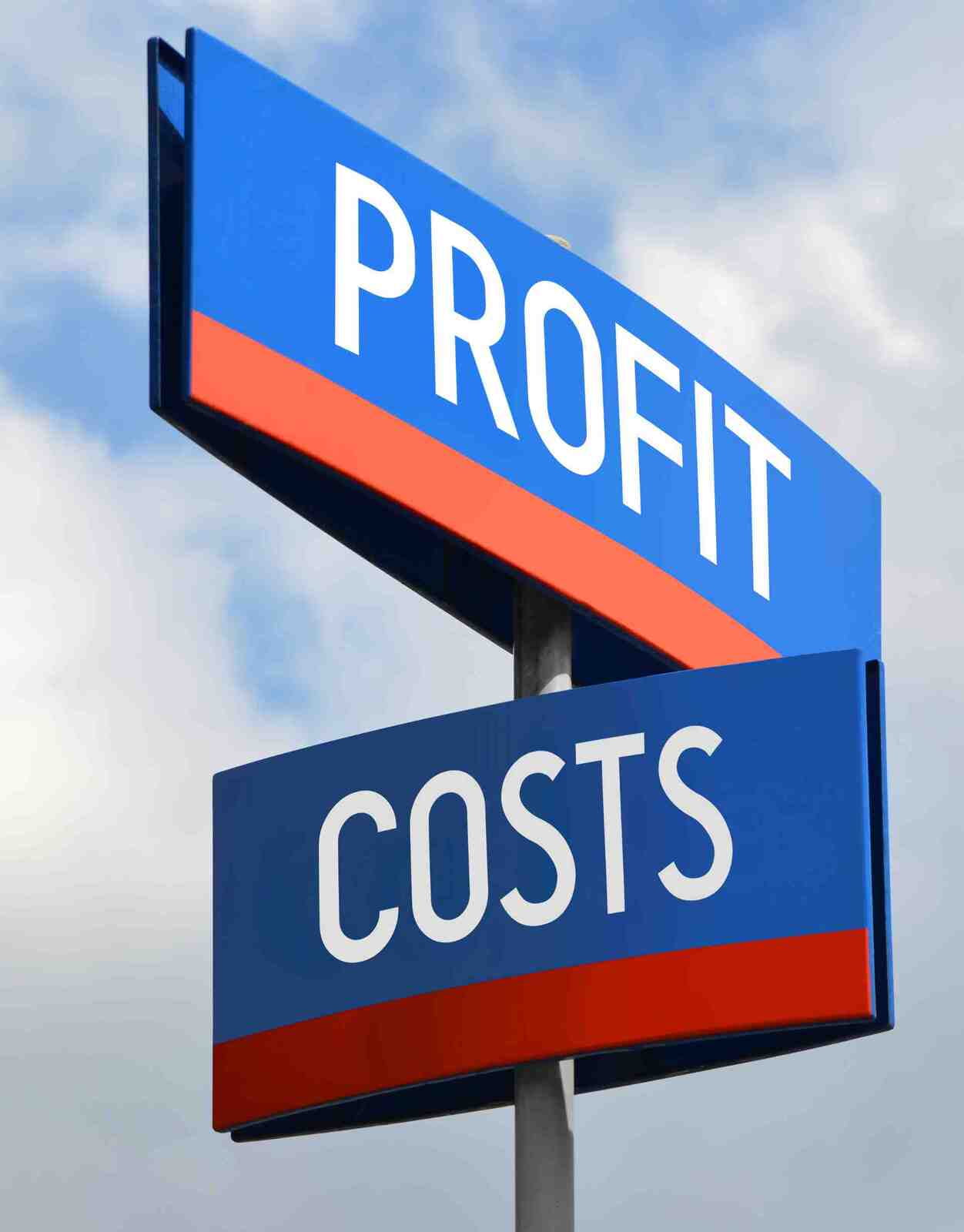
A cost-benefit analysis (CBA) provides a quick and efficient way to determine the value and justification of new business decisions. Small businesses can't afford to make impulsive decisions without researching and justifying those actions. The average profit margin for small businesses in North America is between 7% and 10%, leaving very little room for careless mistakes. Making decisions without considering cost implications could mean your company incurs financial losses, missed opportunities, and employee burnout. Business owners and project managers must conduct a cost-benefit analysis for every major decision.
What is Cost Benefit Analysis?
Cost-benefit analysis (CBA) is a straightforward and practical decision-making tool to help people and organizations make more informed choices. It involves examining the potential benefits expected from a particular decision or action and subtracting all the associated costs. By comparing the benefits and costs, businesses can determine whether a decision will bring more value than it costs to implement.
Some experts go beyond tangible costs and benefits to make cost-benefit analysis even more accurate. They create models to put a dollar value on intangible factors, such as the positive impact of employee satisfaction on productivity. This analysis is crucial for businesses to make well-informed decisions. It helps them prioritize projects, allocate resources efficiently, and avoid unnecessary expenses on choices that might not yield significant benefits.
The cost-benefit analysis is an integral part of the initial proposal stages for any business project. It takes place before creating project schedules, developing the scope of work, or mapping out processes. This analysis serves as the essential justification for moving forward with a proposed action. By conducting cost-benefit analyses, businesses can optimize their operations, increase profitability, and ensure their investments align with their strategic goals.

When to Use Cost-Benefit Analysis in Your Business?
Knowing when to use CBA can be instrumental in making well-informed choices and optimizing your organization's performance. Here are some critical scenarios where implementing cost-benefit analysis can be particularly beneficial for your business:
Capital Investment Projects:
When organizations consider investing in new equipment, machinery, or infrastructure, they conduct a cost-benefit analysis to compare the initial investment cost with the expected long-term benefits. This helps them determine whether the project is financially viable and if it will yield a positive return on investment.
Project Initiation:
While cost-benefit analysis is not necessary for every single project, depending on the size of said project, they're essential for those destined to eat up a lot of time, money, and human resources. After all, it's better to go into a project knowing the estimated return on investment than to fly blind into a world of uncertainty with a chunk of company money at your disposal.
Software or Technology Adoption:
Before implementing new software or technology systems, companies perform a cost-benefit analysis to assess the potential benefits, such as increased efficiency, improved productivity, and cost savings, against the costs of acquiring, implementing, and maintaining the technology.
Market Pivot:
A market pivot represents a significant shift in an organization's strategy, targeting new markets or customer segments. Cost-benefit analysis helps assess the potential benefits of the pivot, such as increased market share or revenue, against the costs involved, such as rebranding, repositioning, and marketing expenses. It ensures the pivot is financially feasible and aligns with the organization's objectives.
Process Improvement Implementation:
Before making process improvements, ensuring they align with the organization's strategic goals and objectives is essential. Cost-benefit analysis confirms that the proposed changes contribute to the business's overall success and support its long-term vision.
Marketing and Advertising Campaigns:
You can edit text on your website by double clicking on a text box on your website. Alternatively, when you select a text box a settings menu will appear. your website by double clicking on a text box on your website. Alternatively, when you select a text box
New Hires:

When it comes to hiring a new employee, your business should approach the decision with careful consideration. Numerous costs, regulations, and processes are involved in bringing someone new on board. Conducting a cost-benefit analysis can offer valuable insights into the advantages and disadvantages of hiring a new employee compared to managing your existing staff. It considers factors like workloads, salaries, training periods, and more, helping you make an informed and well-considered choice.
Employee Training and Development:
When considering investing in employee training programs, companies conduct a cost-benefit analysis to determine if the training will improve employee performance, increase productivity, and reduce turnover costs, outweighing the expenses of the training itself.
Product Development:
Before launching a new product or service, businesses perform a cost-benefit analysis to weigh the expected revenues and profits against the costs of development, production, marketing, and distribution.
Outsourcing vs. In-house Operations:
Before launching a new product or service, businesses perform a cost-benefit analysis to weigh the expected revenues and profits against the costs of development, production, marketing, and distribution.
Infrastructure Projects:
Public sector organizations often use cost-benefit analysis for infrastructure projects such as building roads, bridges, or public transportation systems. This analysis helps determine whether the project will provide sufficient benefits to justify the investment of public funds.
Risk Management:
In risk assessment, cost-benefit analysis helps organizations evaluate the cost-effectiveness of risk mitigation strategies. It allows them to allocate resources efficiently to minimize potential losses while maximizing benefits.
The Hidden Costs of Neglecting Cost-Benefit Analysis
Failure to conduct a cost-benefit analysis can lead to hidden costs for businesses. When decisions are made without a thorough assessment of the potential benefits and drawbacks, organizations risk facing adverse consequences that may not be immediately apparent.
For instance, investing in a new project or initiative without considering its long-term implications can result in financial losses and resource wastage.
Also, overlooking the impact on employee well-being and productivity can lead to increased burnout and decreased morale. Poorly informed decisions may also hinder the company's ability to allocate resources effectively, delaying critical projects and inhibiting growth opportunities.
By neglecting cost-benefit analysis, businesses miss out on valuable insights that could help them make informed choices, leading to suboptimal outcomes and potential setbacks in achieving their strategic goals.
Without a clear understanding of the trade-offs, organizations risk implementing projects that may not yield the expected returns, draining valuable resources and hindering growth.
Thus, integrating cost-benefit analysis into the decision-making process is essential for identifying hidden costs and mitigating risks, ensuring the organization's success and sustainability in the long run.

Conducting Cost Benefit Analysis for Business
Fortunately, performing a cost-benefit analysis is a straightforward process you can complete in a few steps.
Step 1: List Out Your Costs and Benefits
Clearly define the decision or project you want to analyze, including investing in new equipment, launching a marketing campaign, or hiring new employees. All you need to do is list the costs and benefits of a specific action. However, it's not always as simple as it may seem. If you're looking to hire a new employee, you may have to consider these costs and benefits:
Costs
- Time spent training and onboarding
- Background checks
- Jobs boards fees
- HR screening time
- Potential misaligned hire
- Agency finders fee
- Salaries and benefits
Benefits
- New areas of expertise
- Higher quality work
- Potential networking opportunities
- Improved efficiency
- Decreased risk of team burnout
- Lighter workloads across teams
- More experience on the team
While your initial list of costs and benefits may appear lopsided, don't worry; your analysis is only complete once you assign value metrics to each point which we discuss in the next step. A comprehensive cost-benefit analysis considers not only the immediate effects of a decision but also anticipates potential future outcomes, like scope creep in projects, which are crucial for future project planning.
When conducting the cost-benefit analysis for a proposed action, your goal should be specific and clear. For example, focus on the particular software option instead of a general assessment of adopting project management software. A more detailed research process lets you examine specific variables like price, features, and support so you can make a more informed choice.
Step 2 - Create a Value Framework For Your Costs and Benefits
As mentioned in Step 1, having more costs or benefits alone doesn't tell us much unless we assign specific values to each item. Typically, we use monetary values since everything in a business either contributes to or takes away from its bottom line. However, you can also use ranking systems based on level of importance to the company if direct values are not assigned or even in addition to set values for each category.
Some costs and benefits are easy to assign a monetary value, like calculating a new hire's salary or the yearly cost of purchasing a new software tool. However, other aspects are less obvious and require more thought, like quantifying the time spent on employee training, which might otherwise be used for productive work.
There are different types of costs to consider, such as:
- Direct costs are expenses directly tied to the production of a specific cost object, such as a product, service, customer, project, or activity.
- Indirect costs are typically fixed costs originating from the overhead expenses of a department or cost center that can be indepedent from production.
- Tangible costs are easily measurable and quantifiable, often linked to identifiable sources or assets, like payroll, rent, and purchasing tools.
- Intangible costs are challenging to identify and measure, encompassing factors like shifts in customer satisfaction and productivity levels.
- Real costs represent the actual expenses associated with creating an offering, including labor costs and raw materials.

It's also essential to consider best-case and worst-case scenarios. Some costs and benefits are certain, while others are not (e.g., rent versus productivity levels). We should run various potential value scenarios to account for uncertainties. These scenarios are more likely to affect benefits since they are harder to quantify. These scenarios should be taken into account while planning and making decisions or starting projects.
Step 3: Perform a Cost-Benefit Analysis
After assigning values to each cost and benefit, it's time to assess whether the proposed action would yield a positive benefit for your business. To conduct this analysis, you'll use the benefit-cost ratio equation (BCR):
BCR = Benefit value sum ÷ Cost value sum
A positive BCR value indicates that the action would benefit your business, while a negative ratio suggests a net loss. You can decide whether to proceed with or abandon the activity based on the net benefit or loss. However, keep in mind the inherent limitations of your analysis. The cost-benefit analysis relies partly on future assumptions. It's essential to be cautious with overly optimistic long-term assumptions and focus on reasonable timeframes, like months rather than years.
Also, it's not enough to determine that the project will be profitable. You also need to consider when you'll achieve this return. Use your cost-benefit analysis and the payback period formula (payback period = total cost ÷ total revenue) to calculate the duration required to see the return on investment. This information will help you gauge the project's feasibility and align it with your business objectives.
The Significance of Cost-Benefit Analysis
The primary objective of cost-benefit analysis is to assess the feasibility of undertaking a project or task. This crucial decision is based on gathering comprehensive information about the costs and benefits associated with the proposed initiative. By leveraging the cost-benefit analysis findings, management can determine whether the project offers more advantages or poses potential drawbacks to the company. This analytical approach helps make informed and well-supported choices, ensuring that resources are allocated wisely and aligned with the organization's overall success.
Also, the cost-benefit analysis helps prioritize projects or policies based on their net benefits, ensuring that resources are focused on the most advantageous endeavors, which helps hold everyone accountable. It's used to justify significant investments and provides evidence of potential benefits to decision-makers and stakeholders.
The Operations Focus: Responsibility for Cost Benefit Analysis
The Operations Focus: Responsibility for Cost Benefit Analysis
While cost-benefit analysis impacts various aspects of an organization, it is primarily an operations-focused responsibility. That's because it involves evaluating the economic feasibility of specific projects, initiatives, or investments. Operations teams are typically responsible for managing day-to-day activities and processes within an organization, and they have a deep understanding of the costs associated with various projects as well as key performance indicators for the company or teams. Conducting cost-benefit analysis allows them to make informed decisions on whether a project or initiative aligns with the organization's financial objectives. It also helps them prioritize projects based on their expected returns and align them with the available resources.
How Organizations Can Make More Effective Decisions
Effective organizational decision-making is crucial for better business outcomes. Companies with high organization design maturity and clarity in decision rights achieve higher revenue growth and improved performance. Ambiguity around decision-making responsibility can lead to delays and compromises in decision quality. Organizations must clearly define who is responsible for making decisions, what decisions must be made, and how the decision-making process should proceed.
The RACI framework (Responsible, Accountable, Consulted, and Informed) is a helpful tool for designating decision-making roles. Leaders can use this framework to understand and agree on the following:
- Responsible: The individuals responsible for executing the actions prescribed by a decision, not necessarily those who make the decision.
- Accountable: The actual decision-maker, whether an individual or a group. Ideally, each decision should have a single responsible role.
- Consulted: The appropriate people to be consulted for input, information, insights, and perspectives, with guidance on how these consultations should occur.
- Informed: Individuals in leadership positions and other decision-makers whose decisions must consider the prior decision.
Besides defining the who and how, it's crucial to articulate which decisions hold the highest priority; understanding critical choices can help identify the responsible parties and improve decision-making efficiency. While operations teams primarily lead cost-benefit analysis, it requires collaboration with other departments, such as finance, marketing, and strategy, to gather relevant data and inputs. Operations teams often act as the central coordinators in this collaborative effort.

For example, the finance department is vital in providing financial data such as cost projections, revenue forecasts, and financial metrics. They help determine the project's financial feasibility and assess its impact on the organization's overall financial health. The marketing team provides insights into market trends, customer behavior, and potential market share. This information is critical in estimating the project's potential benefits in increased sales, market penetration, and brand recognition.
Unfortunately, the problem with collaborative decision-making is that different teams have different goals and priorities. The inherent conflict naturally goes against joint decisions because each team can have conflicting priorities. Thus, it's crucial to establish a unified goal that everyone in the organization can agree on.
Ensure that your cross-functional team's efforts are aligned with higher business goals. Clearly articulate how their work directly connects to larger business objectives and fits the overall organizational strategy. It is crucial not only to comprehend this connection but also to visualize it. By providing real-time visibility into how each team member's contributions contribute to business goals, everyone will be on the same page and fully engaged in the collective vision.
The operations team brings inputs from various departments together and synthesizes the information into a comprehensive cost-benefit analysis report. As a result, the analysis considers multiple perspectives, potential risks, and opportunities, leading to well-informed and data-driven decision-making by the organization's leadership. The collective expertise of cross-functional teams strengthens the credibility and accuracy of the analysis, guiding the organization toward successful project implementation and optimal resource allocation.
CBA for all Important Decisions
A cost-benefit analysis empowers you to make data-driven decisions, eliminating the reliance on guesswork and subjective decision-making. You'll take a more pragmatic approach rather than wasting time and resources on trial and error. Putting it into the hands of the operations team ensures that all decisions are analyzed with financial implications and considers all hidden costs.
It also factors in all the tangible and intangible benefits and costs, so you're less likely to be blindsided by an outcome. While the responsibility of cost-benefit analysis lies with the operations team, its impact permeates the organization. Collaborative decision-making between team leaders and operations is key to harnessing the full potential of CBA and unleashing the true power of informed decision-making.

